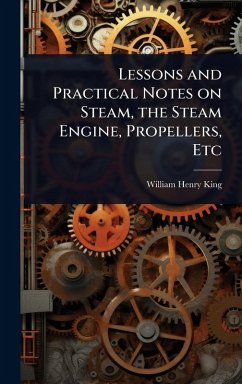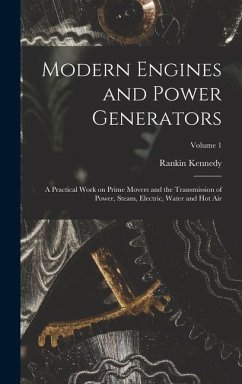
On the Nature, Properties, and Applications of Steam, and On Steam Navigation
Versandkostenfrei!
Versandfertig in über 4 Wochen
36,99 €
inkl. MwSt.
Weitere Ausgaben:

PAYBACK Punkte
18 °P sammeln!
This volume, "On the Nature, Properties, and Applications of Steam, and On Steam Navigation," originating from the seventh edition of the "EncyclopÃ]dia Britannica," provides a detailed exploration of steam technology in the early 19th century. Authored by John Scott Russell and Peter LeCount, the text delves into the fundamental principles governing steam, its properties under varying conditions, and its practical applications across diverse fields. The book offers insights into the mechanics of steam engines, examining their design, operation, and efficiency. A significant portion is dedica...
This volume, "On the Nature, Properties, and Applications of Steam, and On Steam Navigation," originating from the seventh edition of the "EncyclopÃ]dia Britannica," provides a detailed exploration of steam technology in the early 19th century. Authored by John Scott Russell and Peter LeCount, the text delves into the fundamental principles governing steam, its properties under varying conditions, and its practical applications across diverse fields. The book offers insights into the mechanics of steam engines, examining their design, operation, and efficiency. A significant portion is dedicated to steam navigation, chronicling the advancements and impact of steam-powered vessels. With a blend of theoretical exposition and practical applications, this work appeals to historians of science and technology and anyone interested in the evolution of engineering. This work has been selected by scholars as being culturally important, and is part of the knowledge base of civilization as we know it. This work was reproduced from the original artifact, and remains as true to the original work as possible. Therefore, you will see the original copyright references, library stamps (as most of these works have been housed in our most important libraries around the world), and other notations in the work. This work is in the public domain in the United States of America, and possibly other nations. Within the United States, you may freely copy and distribute this work, as no entity (individual or corporate) has a copyright on the body of the work. As a reproduction of a historical artifact, this work may contain missing or blurred pages, poor pictures, errant marks, etc. Scholars believe, and we concur, that this work is important enough to be preserved, reproduced, and made generally available to the public. We appreciate your support of the preservation process, and thank you for being an important part of keeping this knowledge alive and relevant.












